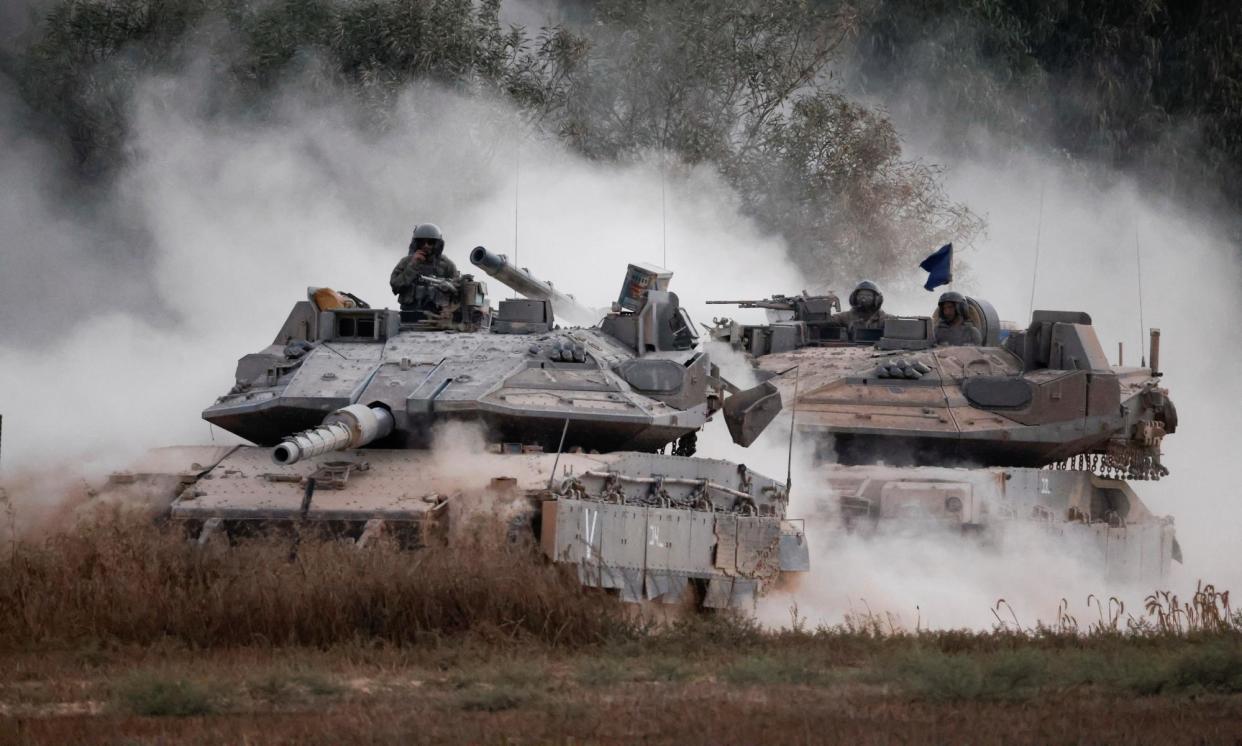US calls new Hamas ceasefire proposal for Gaza a ‘breakthrough’

The White House has described the latest Hamas ceasefire proposal for Gaza as a “breakthrough” establishing a framework for a possible hostage deal, but warned that difficult negotiations remained over the implementation of the agreement.
A senior US official said the Biden administration received the latest Hamas offer “a couple of days ago” and had been studying it ahead of a 30-minute telephone call between Joe Biden and Benjamin Netanyahu on Thursday.
“The conversation was detailed, going through the text of the agreement, constructive and encouraging, while also clear-eyed about the work ahead [and] the steps that must be put in place to finalise this deal and then begin the implementation,” the US official said of the call.
Netanyahu was due to convene a meeting of his security cabinet on Thursday evening to discuss the Hamas proposal, and is dispatching a negotiating team to the Qatari capital, Doha, for talks with US, Egyptian and Qatari mediators in the coming days.
Israeli officials said the delegation would be led, as usual, by David Barnea, the head of the Israeli intelligence agency, the Mossad.
The White House predicted that the Doha talks could convene as early as Friday. It said the Hamas proposal was in line with the three-stage peace deal that Biden outlined on 31 May, which has formally been accepted by the Israeli government and endorsed by the UN security council.
US officials had said an earlier Hamas response contained elements that were negotiable but some that were not. The White House reaction to Hamas’s new response was much more positive.
“I think the framework is now in place and we have to work out the implementation steps,” a senior US official said. “What we got back from Hamas was a pretty significant adjustment to what had been their position, and that is encouraging. We have heard the same from the Israelis.”
The official stressed that the agreement was not yet final, however. “This does not mean this deal is going to be closed in a period of days. There’s significant work to be done on some of the implementation steps,” they said.
The main obstacle in negotiations until this week had been widely differing views on how the agreement would move from its first phase to its second.
The first phase involves the release by Hamas of elderly, sick and female hostages during a six-week truce, an Israeli withdrawal from Gazan cities, and the release of Palestinian detainees held by Israel.
The second phase would involve the release of all remaining hostages as well as the bodies of those who have died, a permanent end to hostilities and a full Israeli withdrawal from the Gaza Strip. Phase three would mark the start of Gaza’s reconstruction.
The transition from the first to the second phase was to be negotiated during the first six-week truce, and the ceasefire would continue as long as good-faith negotiations continued, but Hamas wanted stronger guarantees over the path to a permanent ceasefire.
Netanyahu had publicly cast doubt on whether that would happen, vowing to complete the destruction of the militia, which has run Gaza for nearly two decades and which launched a surprise attack on southern Israel on 7 October.
“Some of the key issues on the transition from phase one to phase two have really been a stumbling block. I think we’ve had a breakthrough in that area,” the senior US official said, without giving details of the text presented by Hamas.
“Between phase one and phase two … you have to have conditions and arrangements in place. I think that is something that is obvious, but it’s something that Hamas has resisted,” they said, adding that Hamas had dropped its resistance to the imposition of conditions before reaching a permanent ceasefire.
The senior US official said many implementation issues to be negotiated in Doha involved “some sequencing and then a release of detainees”.
“I have to say, given the recent developments, we do believe there’s a pretty significant opening here, and we welcome the prime minister’s readiness to try to seize that opening by empowering his negotiating team to engage directly in Doha over the coming days,” the official said.

 Yahoo News
Yahoo News 
